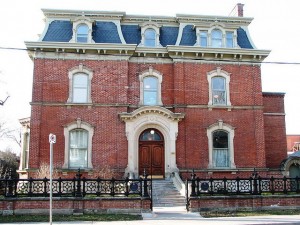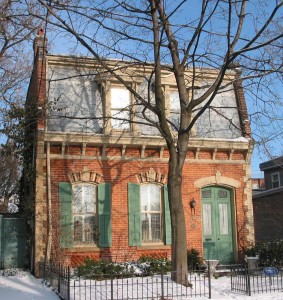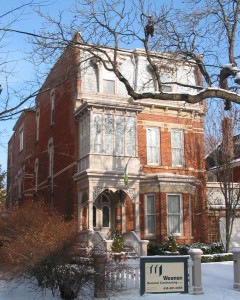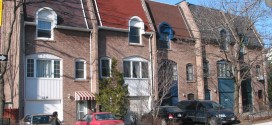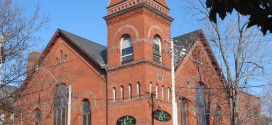Developed during the age of Napoleon III’s Second Empire in France, and appropriately named after its origins, the Second Empire architectural style was introduced to Canada in the late 19th century. Although best suited for large public buildings, Second Empire structures were used residentially as well. Many wealthy, famous individuals during this time requested that their homes be built in accordance to this lavish style.
Due to the boxy, symmetrical nature of the Second Empire it is easily mistaken for an Italianate – but with one major difference, the mansard roof. Because the roof is a dominant feature, the Second Empire almost always includes a dormer. The structure’s additional level is one of the reasons why Second Empire buildings were often used as museums during the 19th century.
Typically, Second Empires were built with classical moldings. Quoins, cornices, and belt courses, along with arched and pediment windows were often included in the detailing of the house as well. Residential examples of a Second Empire can be easily found in the historic neighbourhoods of Toronto. If you travel down Beverly or Carlton Street, you will most certainly find a home or two that resemble this architectural form.
It may be interesting to note that Charles Garnier is responsible for creating the prototype for the Second Empire style. The name of his structure is none other than the Opera Garnier in Paris.
 Cabbagetown Info Events, reviews and what's happening in Cabbagetown, Toronto
Cabbagetown Info Events, reviews and what's happening in Cabbagetown, Toronto
